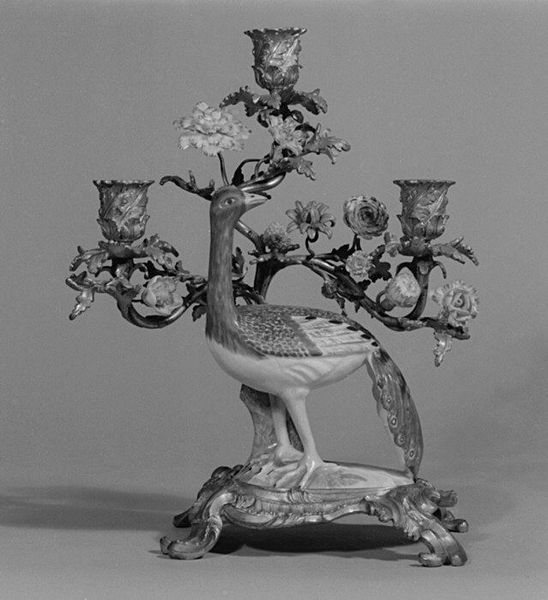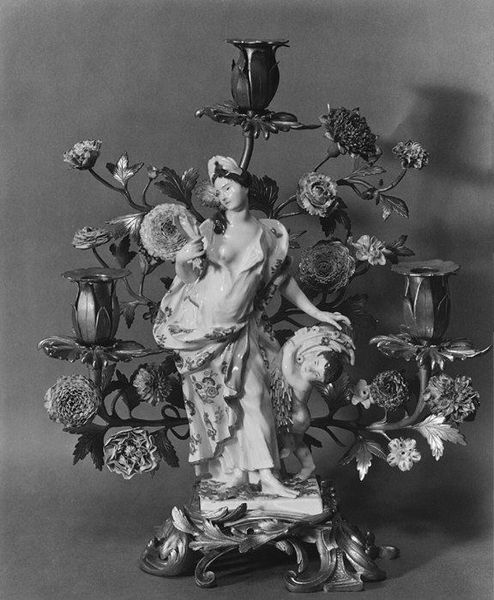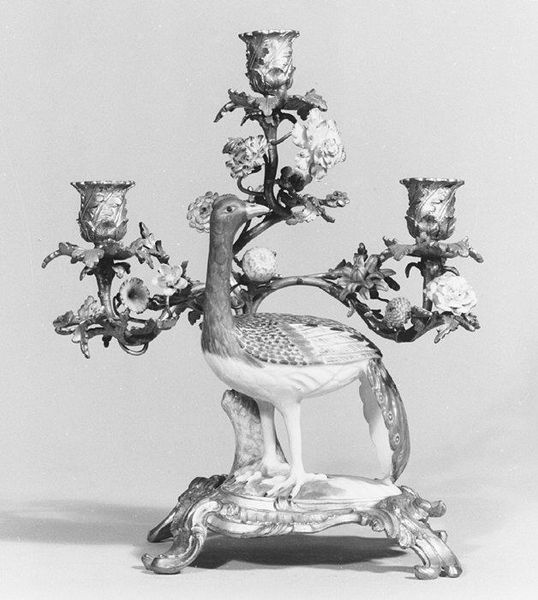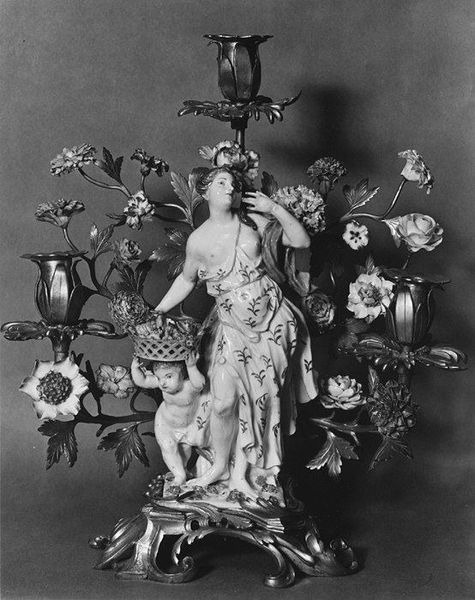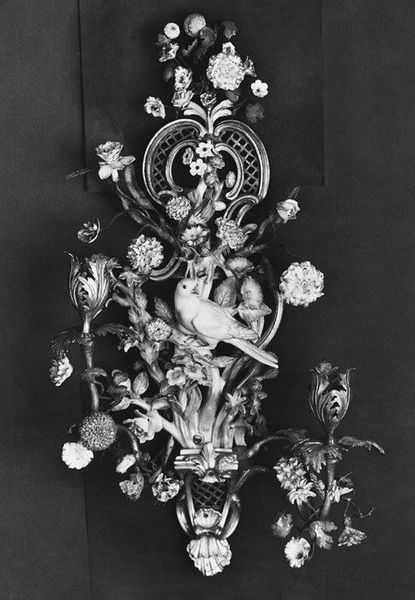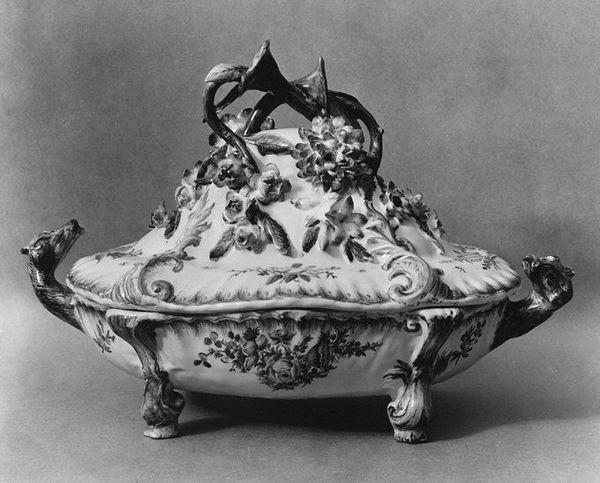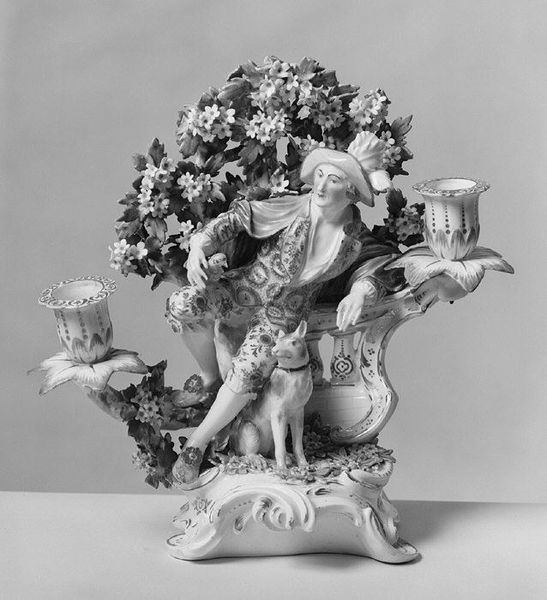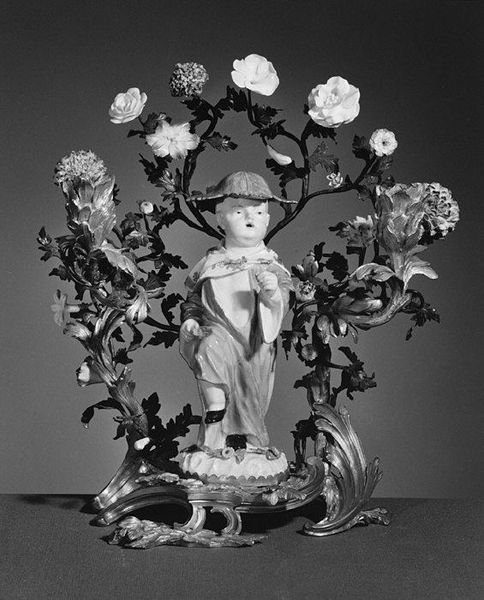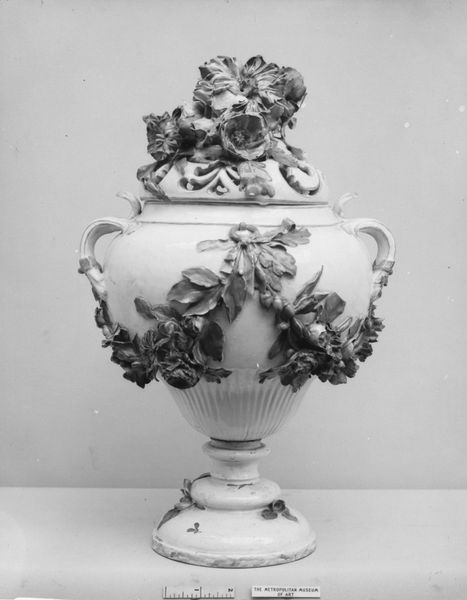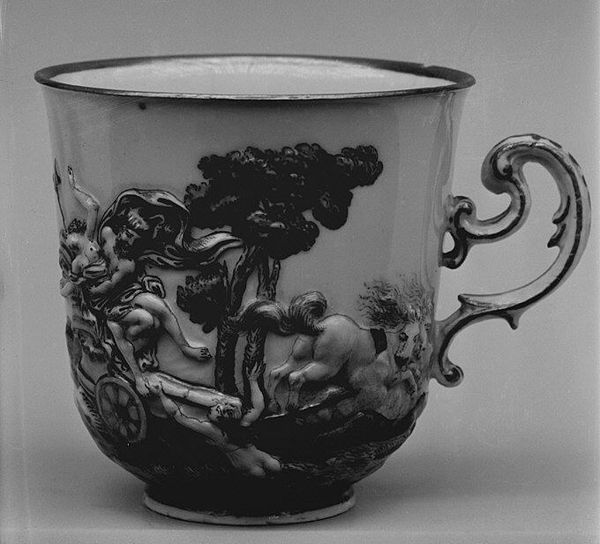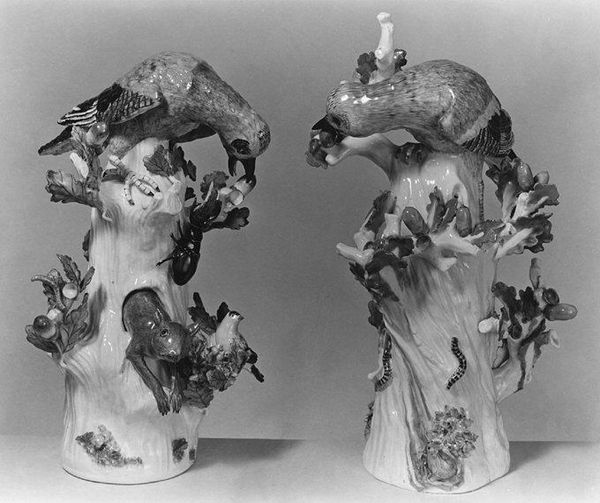
ceramic, porcelain, sculpture
#
sculpture
#
ceramic
#
porcelain
#
figuration
#
sculpture
#
decorative-art
#
rococo
Dimensions: Height (with mount): 10 1/2 in. (26.7 cm)
Copyright: Public Domain
Editor: So, this is "Lovers," a porcelain sculpture, probably a candelabra, crafted by the Meissen Manufactory between 1741 and 1751. The material itself is striking - porcelain seems almost too delicate for something so ornate. What's your take on it? Curator: The Meissen Manufactory was at the heart of a cultural shift. Before its establishment, porcelain was a luxury, imported from the East. Meissen broke that monopoly. What do you think this accessibility, if we can call it that, did to art production and its consumption in Europe? Editor: Well, I guess it democratized beauty, right? Made these sorts of ornate objects available to a wider, wealthier middle class? Did that change the function of art too? Curator: Precisely! And that’s where things get interesting. Objects like this became statements of status and taste. How do you see this particular piece, with its depiction of “lovers”, fitting into that social context? Is it mere decoration? Editor: Hmm. The “lovers” almost feel like they are performing affection. Like they’re playing a role, demonstrating love as a societal expectation… or maybe even as a commodity. Curator: Exactly. Rococo art, and pieces like this Meissen sculpture, served to project power and gentility for patrons. The playful eroticism was a marker of refinement, a deliberate visual language. And that's an important question. In a period of increasing commodity consumption, where social status became so strongly tied to visible displays of wealth, did images and representations begin to act as a reflection, or even a driving force? Editor: So, it's less about the beauty of love and more about love as a spectacle. Curator: Partly. It’s about constructing and projecting an ideal, intertwined with socio-economic climbing and societal norms. Editor: I’ve never considered decorative arts as reflections of these kinds of societal power dynamics, before. Curator: Understanding how institutions and social trends shaped even seemingly frivolous objects allows us to truly understand their history.
Comments
No comments
Be the first to comment and join the conversation on the ultimate creative platform.
